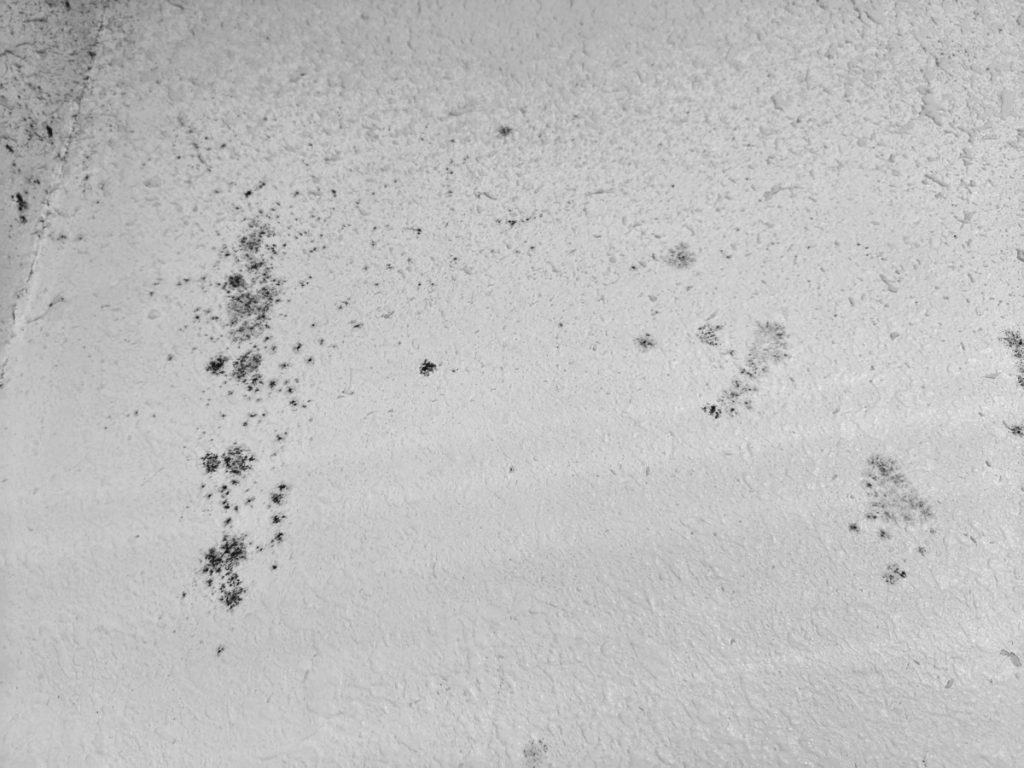Since mold thrives in warm, moist environments, it’s absolutely common to find it horridly multiplying in tents. All it takes is for you to rapidly shove your tent into a closed, poorly aerated space before it completely dries. But now isn’t the time to dwell on the past. You’re left with two choices: sleeping next to that gross mold or sleeping outside . In that scenario, I think it’s pretty clear that it’s probably better to sleep in the moldy tent.
Sleeping in a mildly moldy tent is not dangerous unless you have sensitivities to mold, are immunocompromised, or have respiratory issues such as Asthma. Otherwise, if the odor is not powerful sleeping in a moldy tent for a night isn’t likely to cause harm.
In this article, I’ll explore this topic in detail. You’ll know what’s exactly bad about mold, and how to clean it with nothing but soapy water.
By the way, as an Amazon Associate, I earn when buying qualified products through links on my site.

So, Is It Safe To Sleep In a Moldy Tent?
If your tent has occasional mold spots, it’s likely just fine to sleep in your tent. There are few things that can change this, so read on.
When I say occasional spots, this is about what what I mean: I know someone who has a small bathroom with this level of mold:

One of the people who live here actually is an asthmatic but hasn’t been having issues. This doesn’t mean this is going to be true for everyone, but if there is some mold on your tent, it’s going to be okay to sleep for a night or two.
However, if you experience any of the symptoms of mold (we talk about them in the next section), or if there is an exceptionally moldy smell, it may not be worth it and you’ll have to find another alternative.
Also, if the mold is more intense than this, than you shouldn’t use the tent until you clean it out.
So, Is Mold Dangerous?
Mold is present everywhere around us. You’re literally inhaling its spores on a daily basis. Most of the time, nothing goes wrong because our bodies can deal with this negligible amount of spores.
It starts to rear its ugly head when you sit by an active fungus that keeps spewing microscopic spores into your face. But even then, the risk can be quite variable between people.
For most of us, mold exposure will cause the typical mild signs of sensitivity like:
- Sneezing
- Runny nose
- Red or itchy eyes
- Skin rash
However, some people might be especially allergic to mold. They’ll experience more severe symptoms like:
- Shortness of breath
- Chest tightness
- Coughing
- Wheezing
And of course, people who have underlying respiratory diseases will be at a much bigger risk. Asthmatic attacks, for instance, can be triggered by long-time mold exposure.
Is the Black Mold Especially Dangerous?
Between all the mold colors, people freak out the most about the black type. It’s widely thought to be so toxic that it can lead to death. Thankfully, nothing could be further from the truth.
“Color is not an indication of how dangerous a mold may be,” says the official website of the Centers for Disease Control and Prevention (CDC). “There are very few reports that toxigenic molds found inside homes can cause unique or rare health conditions.”

This doesn’t mean that mold can’t be harmful to our respiratory system–the CDC is very clear in stating that you can get a fungal infection, especially if you are immunocompromised or if you have lung and respiratory system sensitives.
How Can You Manage the Symptoms of Mold?
If you started experiencing any of the mentioned symptoms, it’d be wise to get out of the tent to give your lungs a break by breathing clean, spore-free air.
Then, you can start alleviating the symptoms by the methods you normally use to control any typical allergy.
Corticosteroid nasal sprays, like Flonase, can effectively reduce airway inflammation.
Antihistamines can be a bit more efficient by calming the irritated immune system, which should instantly eradicate most, if not all, of the symptoms. Zyrtec and Claritin (see on Amazon) are two of the best OTC antihistamines that don’t have side effects.
If you want to steer clear of medications, you can rinse your nasal passages with warm water to flush down the spores and clear your airway. For a convenient application, you can get a portable nasal irrigator. (Amazon)
How to Clean Your Moldy Tent
Medically speaking, you probably won’t suffer from the symptoms of mold sensitivity unless you sleep beside moldy stains for more than one day.
In other words, if you didn’t notice the mold growth before your bedtime, you can ignore it, get a good night’s sleep, and handle it with a fresh mind on the next day.
However, this doesn’t apply to folks who already suffer from chronic respiratory conditions like asthma. In this case, you’ll need to start cleaning right away.
Step 1: Prepare Your Tent
Remember, mold thrives in humid, closed areas. I’ve seen many campers trying to scrub moldy stains with the tent folded or lying flat on the ground. This is completely absurd because some water will inevitably creep through the tent fabric and create new infestations!Set up the tent as if you’ll be using it normally. If you have a rain fly, remove it. You’ll need plenty of sun and air to circulate through your tent.
Step 2: Wear Protective Gear
As I said earlier, mold spreads to new areas by spewing its spores into the air. When you scrub it, you’ll surely agitate an extreme amount of spores. That’s why wearing a mask is an absolute necessity. And since some mold types can also release toxins, surgical gloves are crucial, too.
Step 3: Scrub It With Soap and Water
Any mold growth compromises thousands of living cells glued over the surface with special tacky substances. Luckily, simple detergents, like dish soap, can sometimes sweep them away. You’ll probably need some elbow grease, but your efforts will pay off at the end.
After making sure that no moldy stains are still there, rinse the spot thoroughly to get rid of the soap and mold remnants. Lukewarm water will be better since it’ll fragment any remaining tiny stains.Step 4: Entrust Some Natural Cleaners
If the soap doesn’t seem to cut it, no worries! You can try scrubbing with a solution of 2 part lemonade, 1 part white vinegar, and a pinch of salt.
“Why these,” you might ask? The citric acid present in lemon can quickly eradicate mold and mildew without being too harsh on your tent’s fabric.Vinegar shares the same properties since it’s based on a similar solution: acetic acid. It’s actually stronger than lemon, but some people may not appreciate its rather strong odor.
Salt is a strikingly powerful substance that bacteria and fungus can’t tolerate. It works by sucking the moisture out of the mold cells, depriving them of the essence of their growth.
And just like the last step, make sure to give your tent a quick rinse by warm water to remove any remnants.
Step 5: Leave It to the Sun
I’m sorry to break it to you, but no matter how hard you scrub, you’ll inadvertently overlook some microscopic mold cells. Unless you possess Superman’s heat vision, you won’t be able to eradicate them yourself.
Lucky for you, the solution is right above your head. The ultraviolet rays generated by the sun have a capacity high enough to kill mold spores, anthrax (medicinenet), streptococci bacteria (yourgenome.org), you name it!To ensure the best results, dry the moldy spot with a clean cloth and position it under direct sunlight. And of course, open the doors and windows to properly aerate your tent’s interior.
Step 6: Deodorizing
Most of the time, scrubbing and sun drying should leave your tent smelling as good as new. However, if the mold issue has been brewing for a while, chances are the mold cells have seeped into the fabric’s tiny spaces. They might keep bugging you with an infernal smell, even if you can’t see any stains.
In that case, you’ll need to use an enzymatic cleaner and deodorizer (see on Amazon). If you’re unfamiliar, enzymatic cleaners contain biological substances that literally “digest” living cells.To use this cleaner, pour some drops into a cup of clean warm water and wipe it over your tent’s fabric. And that’s it! You shouldn’t rinse or dry it off. It’ll slowly diffuse into the fabric to hunt down all the mold cells lurking inside.
If you want more details on how to address a stinky tent, check out our article, here.
Step 7: Repair the Damage
By now, your mold problem should be completely resolved. Nevertheless, you might be left to face yet another crucial issue.
See, all the steps described earlier should be fairly safe on your tent’s fabric. But the actual possibility of damage boils down to your tent quality. Low-end tents may not even endure a simple detergent. The good news is, if your tent started fading and losing water resistance, you may not have to throw it away yet!Get a waterproofing spray and sprinkle on the affected spot. And just like the deodorizer, you should let it dry on its own. After enough time, the new protective coat will cause water to bead up and dry normally.
Is It Safe To Use Bleach On a Tent?
Using bleach 1. in the recommended dilution stated by the CDC 2. promptly rinsing the area after mold removal is safe, and 3. on fabrics that are not sensitive to bleach is safe and won’t damage your tent.
The CDC officially recommends 1 cup bleach to 1 gallon (no more) for killing and removing mold. Many people are uncomfortable with using bleach so you have to weigh the pros and cons of this approach.
Bleach can destroy your tent fabric if used in too high a concentration or if it’s not rinsed off properly. Proceed with caution.
For example, this study found that bleach can damage fabrics of certain fabrics and it worked fine on others. It particularly called out clothing with nylon fabrics. Tents are often made with nylon or polyester.
So, depending on the fabric type of your tent, you can use the recommended dilution of bleach to clean the area and then you should promptly wash it with water and a rag to ensure you don’t leave any bleach behind.
How Do I Prevent Mold On My Tent?
The most important thing you can do to prevent mold from accumulating on your tent in the first place is to dry your tent completely when you’re not using it.
This sounds simple, but there are a lot of reasons why it can be tricky to completely dry your tent. The most obvious being, if you live in an apartment and you don’t have a place to set up your tent to dry when you’re home!
I talk about meaningful strategies to dry your tent anywhere, in any living situation here. Make sure and check that article out.
What Is Mold?
Mold is a type of fungus that primarily exists in moist areas. Although it’s commonly known for being black or green, it can also be white, orange, or purple.
Even though it looks super gross to us, the environment is always grateful for its presence. Without mold, we would’ve had tons of dead leaves, plants, and trees that can’t be naturally decomposed.
But how did that mold reach your tent? Well, any actively growing mold releases thousands of spores into the air. They keep aimlessly floating around until they find a moist surface that they can adhere to. If you store your tent while it’s still wet, you’ll be more likely to find it devoured by mold after a couple of days.
The premise of this article is interesting, since most modern tents are made from inorganic materials which mold doesn’t really care about. However, dirt and other organic substances get everywhere. It’s likely the reason your tent is moldy is because there are other organic materials on your tent. A good cleaning can go a long way in mold prevention.
Conclusion
Is it safe to sleep in a moldy tent? Well, it’s by no means ideal, but it’s certainly better than sleeping in the open air. If you ever encounter this problem, just go to sleep and worry about it the next day.
If the growth is still fresh, consider yourself lucky! A quick scrub with water and soap should be more than enough. If you have access to lemonade, vinegar, and salt, use them to get the job done quicker.
Lastly, if your tent keeps stinking, you’ll need an enzymatic cleaner. This will hunt down and eradicate the mold cells by biological digestive enzymes.
